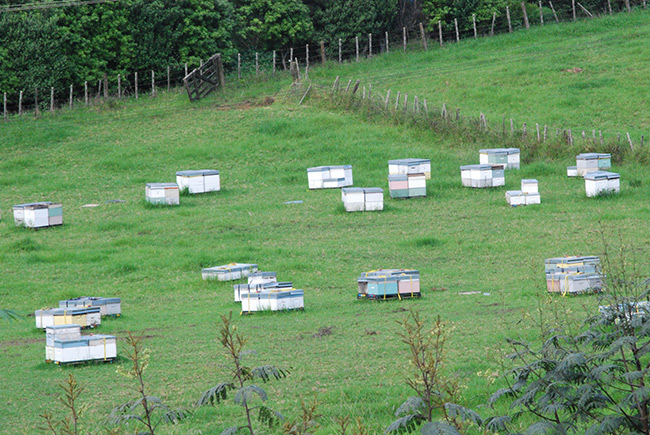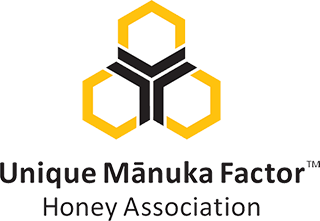
- The
Northland «
Primary
Industry « Honey
| < previous
| next > |
Honey |
||||
|
|
||||
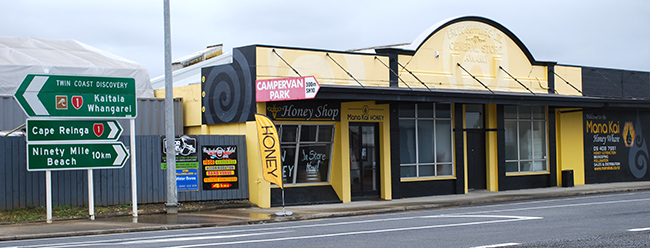 |
||||
| March 16 - Mana Kai Honey, a Māori
beekeeping business formed in 2013, has a honey extraction facility and
shop at 76 State Highway 1 in Awanui, 5 km north of Kaitaia. |
||||
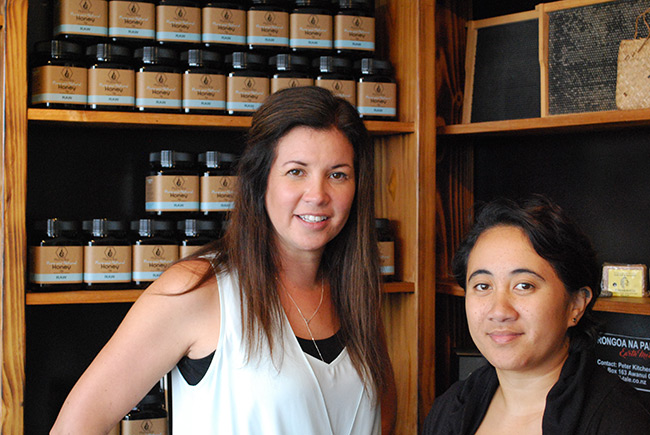 |
||||
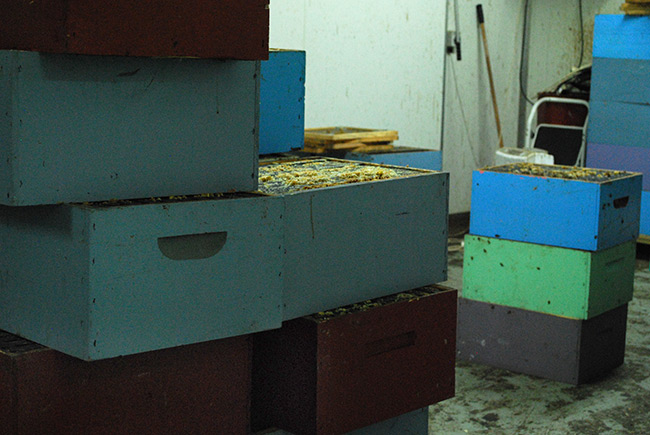 |
||||
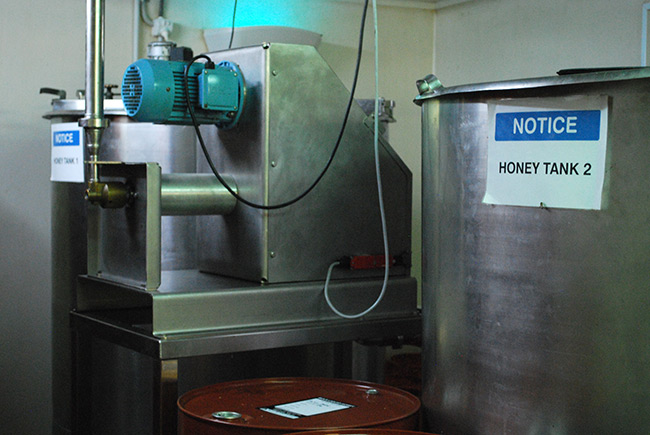 |
||||
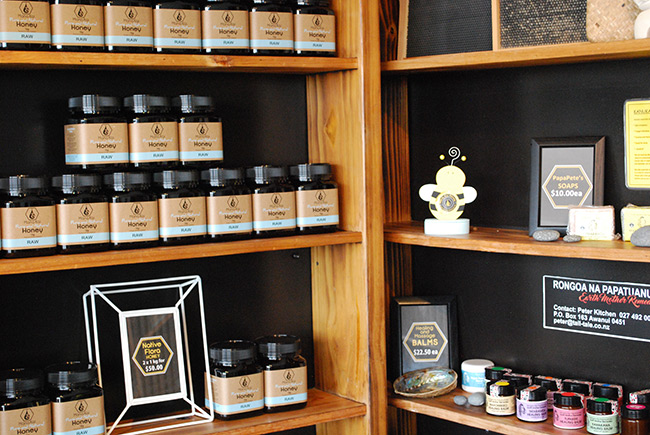 |
||||
| Sera Grubb,
co-founder and managing director of Mana Kai Honey,, and Te Rina
Popata, operations manager. |
||||
|
|
||||
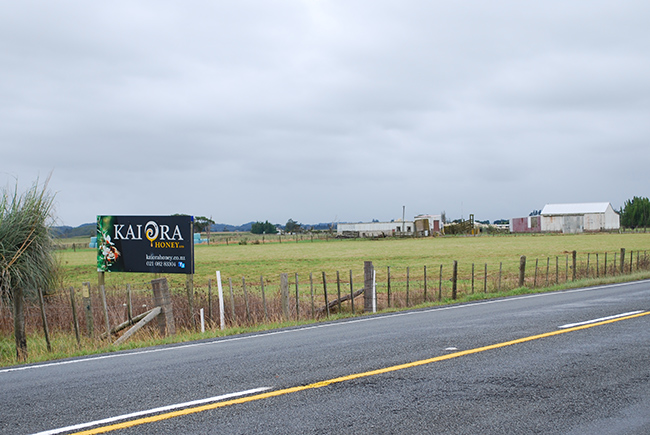 |
||||
| Sign in the Awanui area promoting Kai Ora Honey Ltd., a Maori family owned business operating 2,000 hives. | ||||
|
|
||||
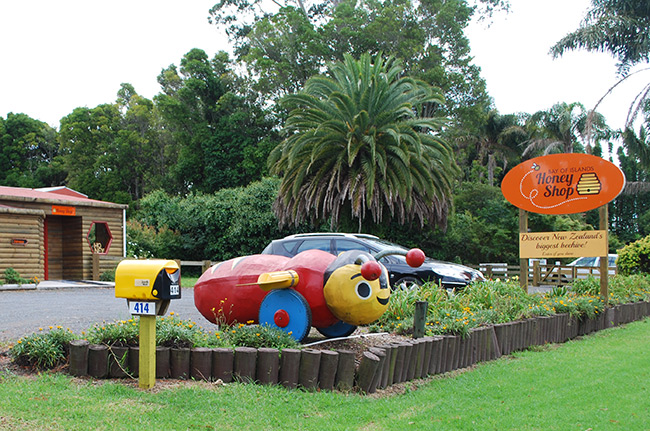 |
||||
| March 24- In addition to selling
a range
of products, Bay of Islands
Honey Shop in Kerikeri has New Zealand's biggest beehive. The
firm also operates a packing plant. |
||||
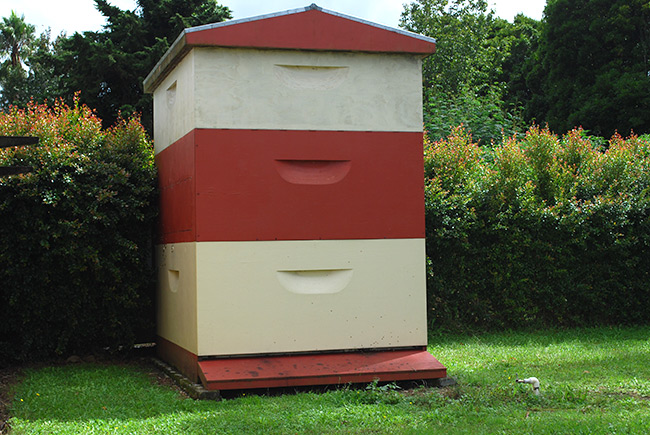 |
||||
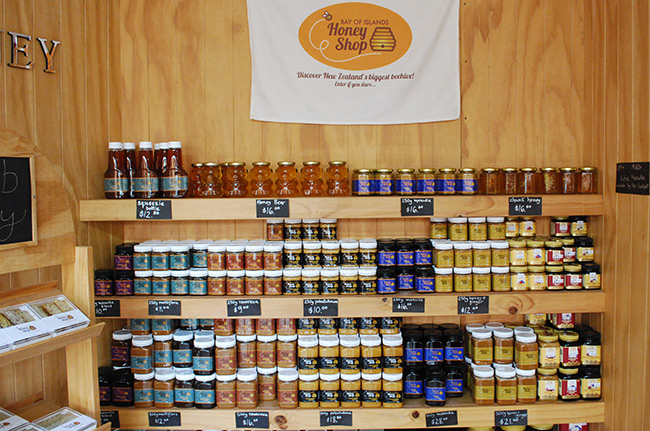 |
||||
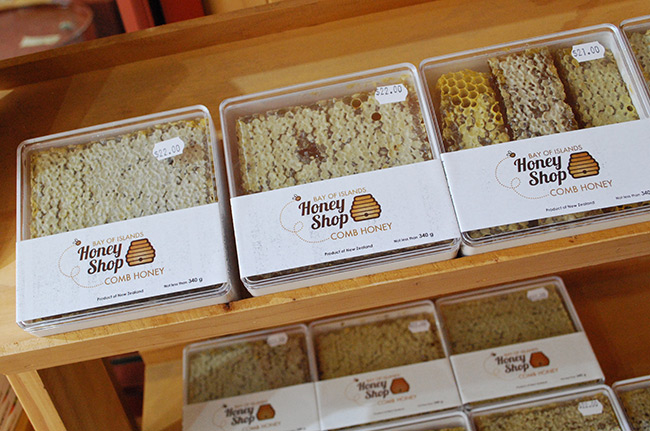 |
||||
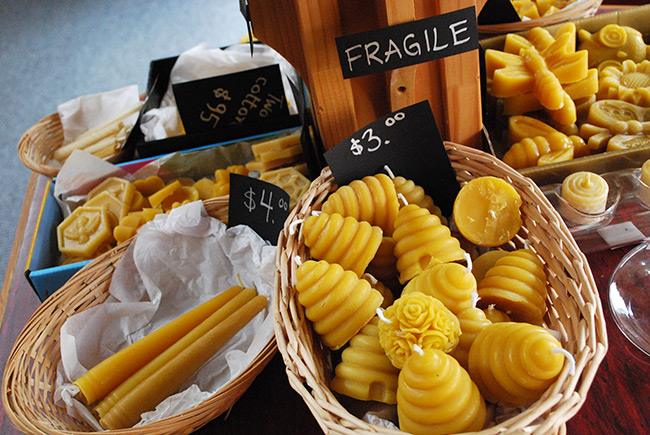 |
||||
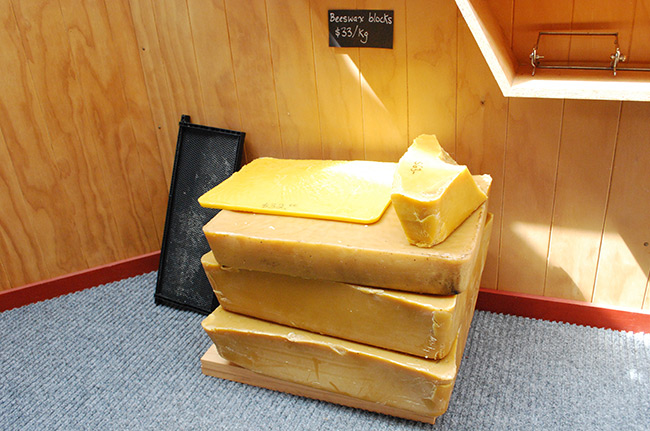 |
||||
|
|
||||
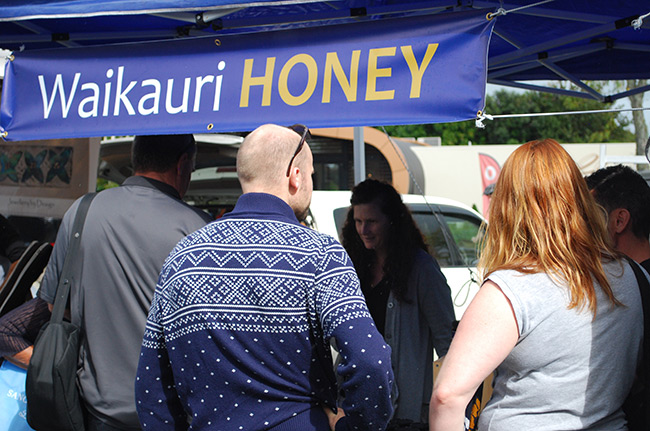 |
||||
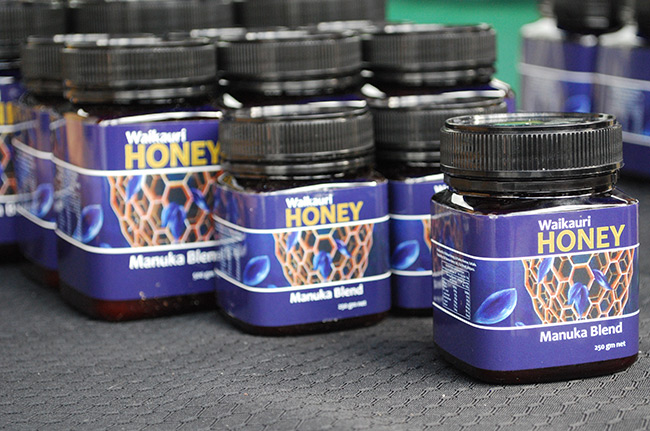 |
||||
| March 24 - Waikauri Honey at
the
farmer's market in Kerikeri. |
||||
|
|
||||
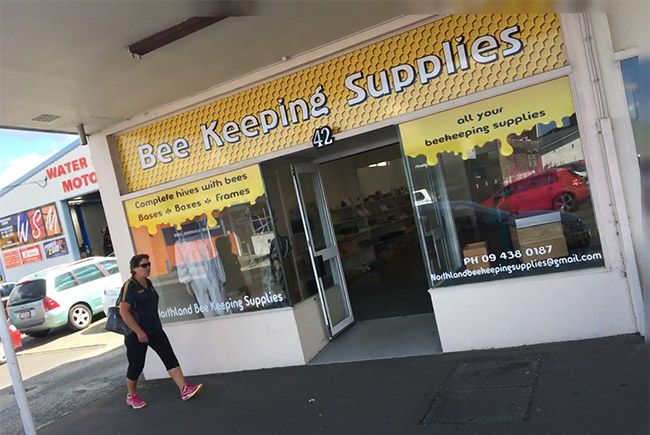 |
||||
| March - Northland Bee
Keeping Supplies in Whangerei. |
||||
Notes: --. "Ministry for Primary Industries 2017 Apiculture Monitoring Programme." Ministry for Primary Industries. https://www.mpi.govt.nz/dmsdocument/27678-apiculture-ministry-for-primary-industries-2017-apiculture-monitoring-programme --. "Investment opportunities in the New Zealand Honey Industry." Coriolis Research, May 2012. http://www.mbie.govt.nz/info-services/sectors-industries/food-beverage/documents-image-library/Investment%20opportunities%20in%20the%20honey%20industry%20-PDF%202.8%20MB.pdf "The wonderful world of bees." Huka Honey Hive (website), 2014. https://www.thewonderfulworldofbees.co.nz/ --. "New trend in beehive thefts in Northland." New Zealand Herald, April 3, 2017. https://www.nzherald.co.nz/nz/news/article.cfm?c_id=1&objectid=11824979 --. "Riddle of how 1,700 tons of manuka honey are made... but 10,000 are sold." New Zealand Herald, Aug. 25, 2016. https://www.nzherald.co.nz/business/news/article.cfm?c_id=3&objectid=11699412 Sophie Boot and Jason Walls. "MPI unveils official mānuka honey definition." National Business Review. Dec. 12, 2017. https://www.nbr.co.nz/article/mpi-unveils-official-manuka-honey-definition-211066 Gerard Hutching and Jullie Iles. "NZ trademarks mānuka honey and officials create new definition." Stuff. Dec. 12, 2017. https://www.stuff.co.nz/business/farming/agribusiness/99779992/new-zealand-trademarks-mnuka-honey Jamie Gray. "MPI makes 11th hour change to manuka honey rules." New Zealand Herald, Jan. 30, 2018. https://www.nzherald.co.nz/business/news/article.cfm?c_id=3&objectid=11984601 --. "Trans-Tasman war of words over 'mānuka' honey gets stickier." Radio New Zealand, Jan. 12, 2018. https://www.radionz.co.nz/news/country/347930/trans-tasman-war-of-words-over-manuka-honey-gets-stickier "Is New Zealand manuka honey BETTER than Australian manuka honey?" Heal Yourself: Eat Honey blog. http://healthywithhoney.com/is-new-zealand-manuka-honey-better-than-australian-manuka-honey Dee A. Carter, Shona E. Blair, Nural N. Cokcetin, Daniel Bouzo, Peter Brooks, Ralf Schothauer, and Elizabeth J. Harry. "Therapeutic Manuka Honey: No Longer So Alternative." Frontiers in Microbiology, 2016; 7: 569 (April 2016). https://www.ncbi.nlm.nih.gov/pmc/articles/PMC4837971 more information:
|
